Take a moment. Place your hand on your chest. Can you feel your heart beating?
That steady beat is not just a sound or a feeling — it’s the rhythm of life. It means your heart is working, and your blood is moving. Right now, as you sit and read this, your blood is traveling to your brain, your hands, your toes — and back again. All without you doing a thing.
But have you ever stopped to wonder how it all works?
How does blood move through the body? Where does it go? What does it carry? And how does it help keep you alive?
In this article, we’re going to take a journey inside you — to explore the amazing system that keeps you warm, healthy, and full of energy: the circulatory system. You’ll see how your heart, blood, and blood vessels work together as a perfect team. And by the end, you’ll understand your body in a whole new way.
This isn’t just science. It’s your story.
Meet Your Heart – The Body’s Amazing Pump
Your heart is a strong, hardworking muscle that sits in the middle of your chest, just a little to the left. It’s about the size of your fist — but don’t let its size fool you. Your heart is one of the most powerful organs in your whole body.
It never takes a break. From the moment you’re born until your very last day, your heart keeps beating — pushing blood all around your body.
Think of your heart like a pump — a smart, steady pump that pushes blood through a big system of tubes. These tubes are called blood vessels, and they reach every single part of your body, from your brain to your toes.
How the Heart Beats
The heart has four little rooms inside it, called chambers. These chambers open and close to move blood in the right direction. Each beat of your heart is like a “push” — sending blood forward with just the right force.
- One side of your heart sends blood to your lungs, to pick up fresh oxygen.
- The other side sends that oxygen-filled blood to the rest of your body.
Once your cells have used the oxygen, the blood comes back to the heart again — and the cycle keeps going.
This whole loop happens about 100,000 times a day — without you even thinking about it.
What’s Inside Blood? – The Tiny Heroes Inside You
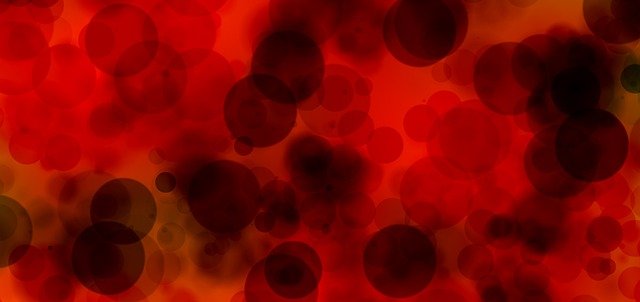
Blood might look like just red liquid, but it’s actually a busy team of workers. Each part of your blood has a special job — and they all work together like a team to keep you healthy, full of energy, and safe from harm.
Let’s look more closely at each of these tiny heroes:
1. Red Blood Cells – The Oxygen Carriers
Red blood cells are the most common cells in your blood. If you could shrink down and take a ride through your bloodstream, you’d see these little red disc-shaped cells floating everywhere.
Their main job? To carry oxygen.
Every time you breathe in, oxygen goes into your lungs. Red blood cells pick up that oxygen and deliver it to every cell in your body — like tiny delivery trucks with super important packages.
When they drop off the oxygen, they pick up something else: carbon dioxide — a waste gas your body doesn’t need. Then they take it back to the lungs so you can breathe it out.
Without red blood cells, your brain, muscles, and heart wouldn’t get the fuel they need. That’s why they’re so important!
2. White Blood Cells – The Body’s Soldiers
White blood cells are not as many as red blood cells, but they play a powerful role. They’re your body’s protectors — always on the lookout for germs like bacteria and viruses.
Think of white blood cells like tiny soldiers or bodyguards. When they find something harmful, they attack it, break it down, and help get rid of it.
If you get a cut, white blood cells rush to the area to keep out infection. If you catch a cold, they fight the virus and help you feel better.
Your body makes more white blood cells when you’re sick — which is why doctors sometimes check them in blood tests.
They help keep you safe on the inside, all the time.
3. Platelets – The Little Plugs
Have you ever gotten a scrape or small cut that stopped bleeding after a while?
That’s thanks to your platelets.
Platelets are very tiny cells that stick together when they find a broken blood vessel. They form a plug, like a patch on a leaky pipe, to stop the bleeding. Then they help build a scab — the dry, hard covering that protects the cut while it heals.
Without platelets, even small cuts would keep bleeding. These tiny helpers make sure your blood stops only when and where it’s supposed to.
4. Plasma – The River That Carries Everything
Plasma is the liquid part of blood — and it makes up more than half of it!
Even though it looks yellowish and watery, plasma is full of important jobs. It:
- Carries nutrients from your food
- Moves hormones (which send messages to organs)
- Takes away waste so your body can get rid of it
- Helps the blood flow smoothly through your body
It’s like the river that carries all the blood cells and chemicals where they need to go. Without plasma, your red and white blood cells wouldn’t be able to move at all.
Why Blood Is So Important – Your Body’s Super Transport System
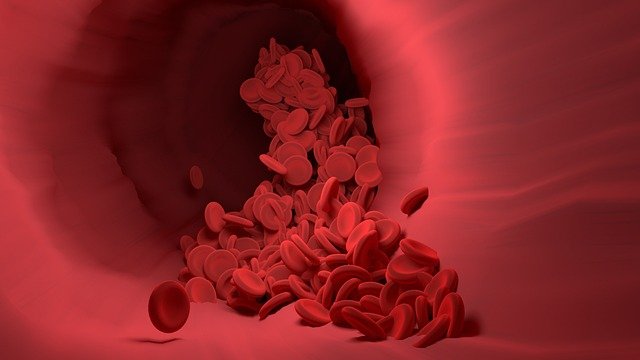
Blood may seem simple, but it’s doing hundreds of important jobs every second. It’s like your body’s super transport system, moving things around nonstop — day and night, whether you’re asleep or running in the playground.
Let’s break down exactly why blood matters so much, and how it helps keep every part of you alive, healthy, and full of energy.
1. Blood Carries Oxygen
Oxygen is the fuel your body needs to work. Your cells — like the ones in your brain, heart, and muscles — can’t do anything without it.
When you breathe in, your lungs fill with air. The oxygen in that air moves into your red blood cells, which carry it through your bloodstream to every corner of your body.
Without blood delivering oxygen, your cells would stop working — and that means your body would stop working too.
2. Blood Delivers Food to Your Cells
After you eat, your stomach and intestines break the food down into tiny pieces called nutrients. But how do those nutrients get to your brain, your skin, your legs?
Through your blood.
Your blood picks up these nutrients and delivers them to your cells, just like a delivery truck bringing food to a store.
This is how your body gets energy from the food you eat — thanks to the hard work of blood.
3. Blood Takes Away Waste
Every cell in your body creates waste, just like a busy kitchen or factory. This waste needs to be taken out — or it can cause problems.
Blood helps with that too.
It picks up waste, like carbon dioxide and other chemicals, and takes them to places like the lungs, kidneys, and liver — where the body can safely get rid of them.
This keeps your body clean and balanced inside, without you even noticing.
4. Blood Helps You Heal
If you fall and get a scrape, your skin might bleed a little. But before long, it stops.
That’s because platelets in your blood rush to the cut. They form a plug to stop the bleeding and build a scab, which protects the area while it heals.
Blood also brings white blood cells to the injury — to fight off germs and stop infection. It’s like your body’s emergency crew arriving at the scene!
5. Blood Fights Sickness
Blood is one of your body’s first defenders against getting sick.
The white blood cells in your blood are like little guards. They search for germs (like viruses or bacteria), attack them, and help your body get better.
When you have a fever or feel tired while you’re sick, it’s partly because your blood is working extra hard to protect you.
6. Blood Keeps Your Temperature Just Right
Sometimes you feel hot. Sometimes you feel cold. But your body always tries to keep your inside temperature steady — not too hot, not too cold.
Blood helps with that too.
It moves warm blood to your skin when you’re too hot, helping you cool down. And it holds onto heat when you’re cold, helping you warm up.
Your blood acts like a personal thermostat, making sure everything runs smoothly.
The Blood Highway – Arteries, Veins, and Capillaries
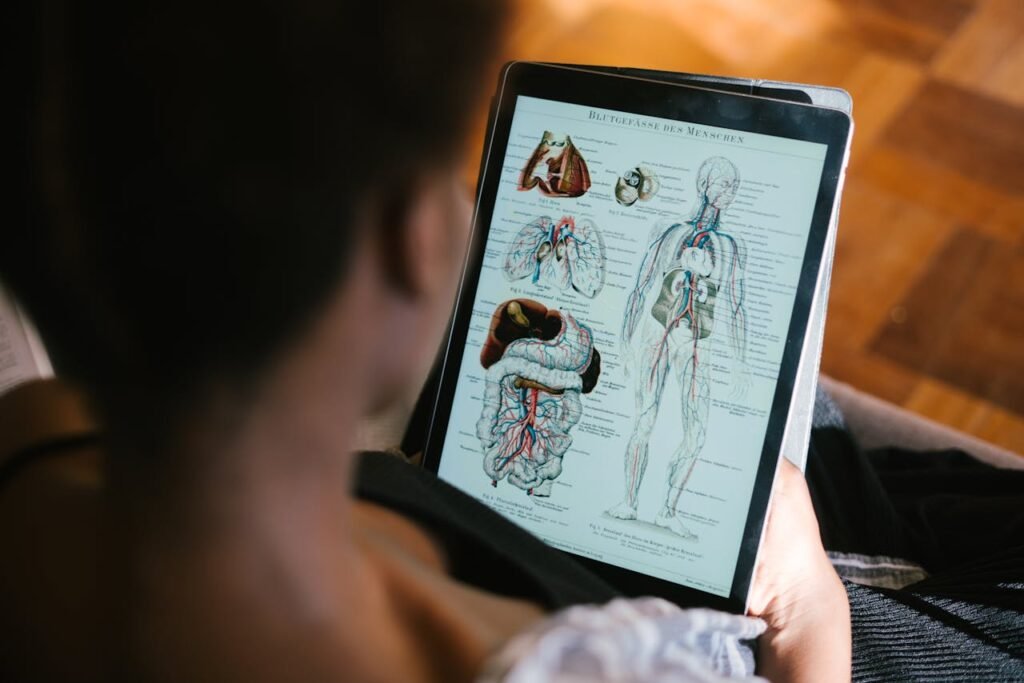
Your blood doesn’t just float around inside you. It needs roads — and your body has built the perfect system of them.
These roads are called blood vessels, and they come in three main types: arteries, veins, and capillaries.
Together, they make a giant loop — kind of like a roller coaster for your blood. This loop is what we call the circulatory system.
Let’s look at how each blood vessel helps blood do its job.
Arteries – The Strong, Fast Highways
Arteries are the big, strong blood vessels that carry oxygen-rich blood away from your heart.
Think of arteries like high-speed roads. The blood moves quickly and with power, because it’s just been pumped out by the heart. You can even feel this strong movement in your pulse — like when you touch your wrist or neck and feel a little thump.
One of the biggest arteries in your body is called the aorta. It comes straight out of your heart and branches out like a tree, sending blood to all the different parts of your body.
Capillaries – The Tiny Bridges
Once the blood travels through the big arteries, it needs to slow down and reach the cells — even the tiniest ones at the tips of your fingers or toes.
That’s where capillaries come in.
Capillaries are super tiny blood vessels — so small that blood cells have to squeeze through them one at a time. But this is where all the magic happens.
In capillaries:
- Oxygen and food move out of the blood and into your cells.
- Carbon dioxide and waste move out of your cells and into the blood.
It’s like a little trade station. The blood gives your body what it needs, and picks up what it needs to take away.
Veins – The Gentle Ride Home
After the blood has delivered oxygen and picked up waste, it needs to return to the heart. That’s the job of the veins.
Veins are blood vessels that carry oxygen-poor blood back to the heart — and then to the lungs, where it can pick up fresh oxygen again.
Veins are not as thick as arteries. They also have valves inside them — tiny doors that make sure blood flows in one direction and doesn’t go backward.
You can sometimes see veins under your skin, especially on your hands. They look bluish, but that’s just the way light reflects off your skin — the blood inside is still red!
The Heart Keeps It All Moving
This whole system — arteries, capillaries, veins — wouldn’t work without a pump. That’s where your heart comes in.
With every beat, your heart pushes blood into the arteries, starting the journey. When blood comes back through the veins, the heart gets it ready for another trip.
This loop happens over and over:
- Blood goes out from the heart
- Delivers oxygen and food
- Picks up waste
- Comes back to the heart
- Goes to the lungs for oxygen
- And starts all over again
And it all happens in seconds.
Your heart and blood vessels work like a perfect team — keeping you alive, healthy, and full of energy, all the time.
How Your Circulatory System Changes with Exercise and Emotions
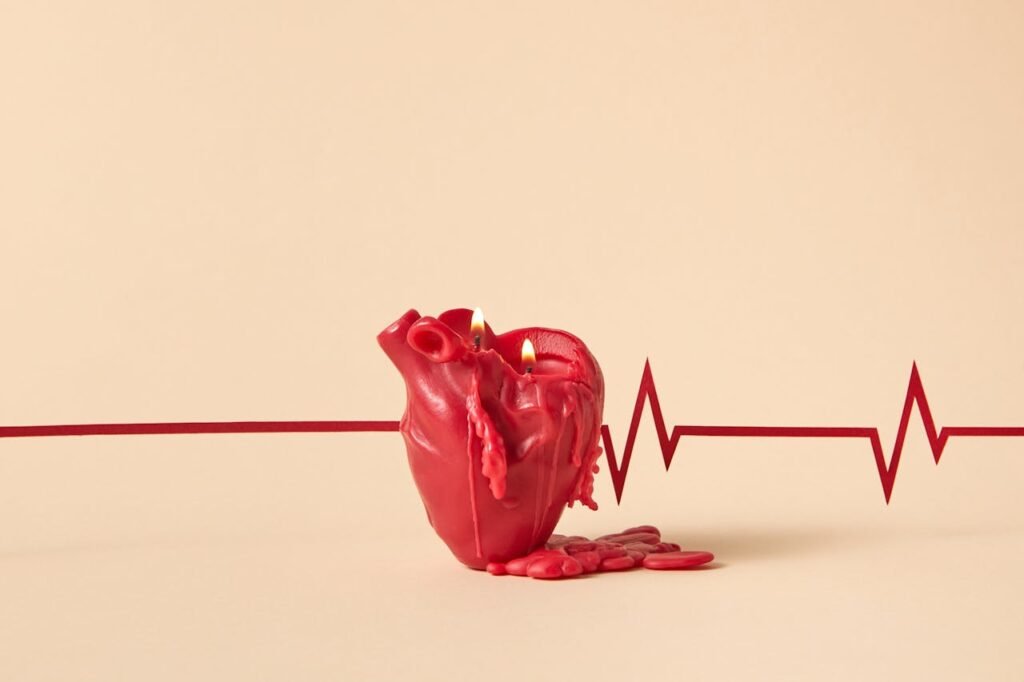
Your circulatory system is not stiff or still. It’s always adjusting — depending on what you’re doing or feeling. It’s kind of like a smart engine that speeds up or slows down to match your needs.
Here’s how:
When You Exercise or Play Hard
Think about the last time you ran really fast, jumped on a trampoline, or played tag with your friends. Did you feel your heart beating faster? Did your face get warm? Were you breathing quickly?
That’s your circulatory system working extra hard — because your muscles need more oxygen and energy during movement.
When you exercise:
- Your heart beats faster to pump more blood
- Your blood vessels open wider to let more blood flow
- Your breathing speeds up so your lungs can send more oxygen into your blood
This helps fuel your body like a car filling with gas. The more you move, the stronger your heart becomes — just like how muscles grow with use.
When You’re Calm or Resting
When you’re relaxing, reading, or sleeping, your heart doesn’t need to work as hard. It slows down.
Your breathing becomes soft. Your blood flows more gently. Everything inside you feels calm and smooth.
This resting time helps your heart recover and grow stronger — just like how we feel better after a good night’s sleep.
When You Feel Scared, Excited, or Nervous
Emotions can also affect your circulatory system. If you’re nervous before a test, scared of the dark, or excited about your birthday — your heart might race. That’s normal!
Your body releases special chemicals when emotions get big. These make your heart beat faster and your blood move quicker — preparing you to “fight or flee,” even if the danger isn’t real.
Taking a few deep breaths can help slow your heart down and bring you back to calm.
At Debsie, we help kids understand these body signals so they feel in control of their feelings, not overwhelmed by them.
How to Keep Your Heart and Blood Healthy – Habits for a Strong, Happy Body
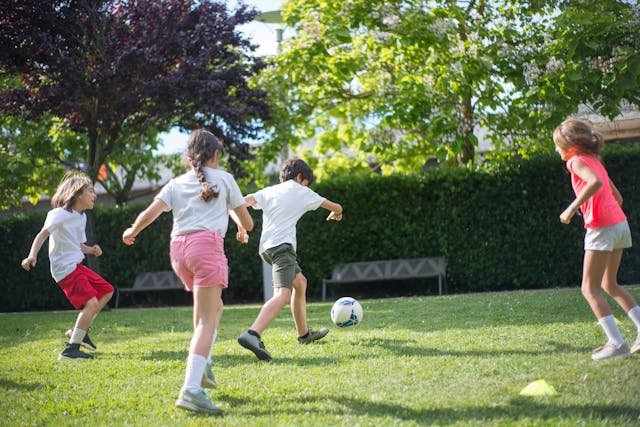
Your heart is like the engine of your body. It powers everything — from your movements to your thoughts. And your blood is the fuel and delivery system that keeps that engine going strong.
The great news is that your heart and blood love simple things. You don’t need fancy equipment or special diets. Just a few smart habits — done every day — can keep your circulatory system in amazing shape.
Let’s explore what those habits look like, one by one.
1. Move Your Body Every Day
Your heart is a muscle, and like any muscle, it gets stronger the more you use it.
That doesn’t mean going to the gym — it means:
- Playing tag with your friends
- Riding your bike
- Jumping rope
- Dancing in your room
- Walking the dog
When you move, your heart beats faster to send more oxygen through your blood. This makes your heart stronger, and it helps your blood flow better.
Kids who are active every day usually sleep better, focus more in class, and feel happier overall.
2. Eat Foods That Love Your Heart
What you eat goes into your blood — and your blood carries it everywhere.
So eating the right foods helps your blood stay clean and your heart beat strong.
Great foods for your heart include:
- Fruits like apples, oranges, berries
- Vegetables like carrots, spinach, and broccoli
- Whole grains like brown rice and oats
- Nuts and seeds (if you’re not allergic)
- Beans and lentils
These foods are full of vitamins, fiber, and healthy fats. They help keep your blood vessels open and your heart healthy.
Try to limit sugary snacks and greasy fried foods — they can make your heart and blood work too hard.
3. Drink Plenty of Water
Your blood needs water to flow easily. When you’re dehydrated (which means not drinking enough water), your blood becomes thicker and harder to pump.
Water helps:
- Keep your blood moving smoothly
- Clean out waste from your cells
- Balance your body temperature
Aim to drink water throughout the day, especially after playing or being outside in the sun.
4. Rest and Sleep Well
Your heart works 24/7 — but even it needs downtime.
When you sleep, your heart rate slows, and your blood pressure goes down. This gives your body time to repair and grow.
Kids who get enough sleep:
- Have better moods
- Get sick less often
- Learn faster
So give your heart a break at night — it’s been working hard all day!
5. Stay Away from Smoke and Polluted Air
Cigarette smoke is one of the worst things for your heart and blood vessels. Even breathing secondhand smoke (from someone else’s cigarette) can damage your circulatory system.
Air pollution from cars and factories can also make your heart work harder.
You can’t control the air outside, but you can:
- Avoid being around smokers
- Stay indoors on high-pollution days
- Spend time in clean, green areas when you can
6. Talk About Your Feelings
Stress, worry, and big emotions can make your heart race. That’s okay — it’s a normal part of life.
But when you talk about your feelings or practice deep breathing, your body calms down. That helps your heart settle too.
At Debsie, we teach kids that a healthy heart also means a calm mind. Because emotional health and physical health always go together.
How Debsie Helps Kids Fall in Love with Learning About the Heart

At Debsie, we believe that science shouldn’t be boring or confusing. It should feel real, exciting, and full of wonder — like a story that’s happening inside your own body. That’s exactly how we teach topics like the circulatory system.
We know that when kids understand how their heart works, they don’t just learn science facts. They feel more connected to their body, more curious about how things work, and more confident in how they take care of themselves.
Here’s how we make that happen:
Science Through Stories and Everyday Life
Instead of heavy textbooks, Debsie teachers explain the circulatory system using:
- Simple language
- Clear examples
- Fun stories
We might say, “Your heart is like the school bus driver — making sure oxygen gets dropped off on time,” or “Your red blood cells are like delivery bikes, racing through tiny alleyways to keep your body alive.”
This helps kids picture what’s happening inside, so the learning really sticks.
Hands-On Experiments That Bring Learning to Life
Kids don’t just hear about the heart — they build it, test it, and play with it.
Debsie’s interactive lessons include:
- Making a working heart pump using straws and balloons
- Drawing a comic strip of red blood cells on their daily journey
- Tracking their own pulse before and after running
- Measuring how fast their heart calms down with deep breaths
These activities turn knowledge into action and experience — and that’s where true learning happens.
Emotional Learning with Real-Life Skills
Debsie also teaches how the heart responds to feelings. Kids learn how breathing, stress, and emotions affect their heart rate. And more importantly — how to calm themselves using breath and movement.
This isn’t just science. It’s life science — and it helps kids feel stronger and safer inside their own skin.
Supportive Teachers, Fun Classes
Our partner teachers are trained to make every child feel seen, heard, and capable — even if they’ve struggled with science before. We make sure each lesson feels like a fun chat with a guide who believes in you.
Every class is built around curiosity and confidence — two things that grow together at Debsie.
A Global Community of Curious Kids
At Debsie, your child isn’t just learning alone. They’re part of a vibrant global classroom, with kids from around the world — all exploring the human body together, asking big questions, and building a love of science that will last a lifetime.
Final Thoughts: The Heartbeat of Learning Starts Here
Your heart beats quietly, faithfully, all day long — never asking for a thank you. It sends blood to every corner of your body, carrying oxygen, food, and everything your cells need to grow and thrive. It helps you play, think, laugh, and sleep.
And now, you understand how it all works.
Learning about the circulatory system isn’t just about naming parts. It’s about understanding yourself — how your body works, how to care for it, and how to listen to the signals it gives you.
At Debsie, we turn these life lessons into joyful journeys. Our expert teachers, playful lessons, and hands-on projects help kids fall in love with science — not because they have to, but because they truly get it.
Whether your child is just starting out or already asking big questions, Debsie is here to help them grow into curious thinkers, kind humans, and confident learners.
Read Next:
